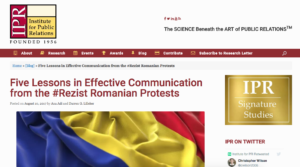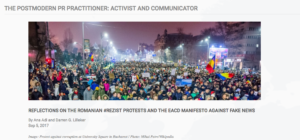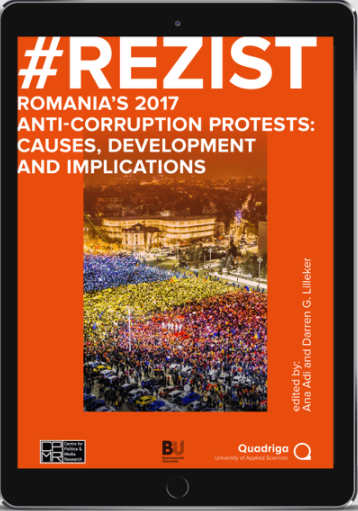At the end of July, Dr Darren G. Lilleker (from Bournemouth University) and I have edited andlaunched an online publication focusing on the Romanian #rezist protests. In an effort to incentivise reading, we have also shared the report widely but also published several separate articles reflecting on the lessons learned from the protests.
The context

In the World Today of Chatham House, we have spoken at large about the causes and similarities of Romania’s protests with other movements in recent years and concluded that, by the looks of it, the country was heading towards a period of instability:
As Romania appears to be entering a new period of political instability, the organisations that emerged out of the protest appear fragmented and unable to sustain their challenge to the regime. And yet, it is undeniable that since 2010 Romania’s protests have promoted some degree of political change, so perhaps the current instability is a necessary evil for the nation to progress.
Judging from the news, we were quite correct (the new government and their new legislative proposals have met further resistance).
Protest and PR

Protests are generally branded as disruptive and undesirable. For communicators (whether in-house or agencies; in training or practising) they are presented as threats rather than opportunities. This perpetuates the opposition between activist/protester (you can add here union member, community organiser, NGO worker) and communicator. Instead on working together on solution, this puts practitioners in a reactive and defensive mode.

Darren and I have looked at the lessons communicators could learn from protests and protest communication. Our post for the Institute for Public Relations, outlines five lessons in effective communication, two of these being long-term planning and accepting that the communicator can be an activist as well. We have enlarged further on this topic, in two separated posts published on the European Association of Communication Directors’ (EACD) blog and that of the Communication Director magazine:
Our main lesson for the discipline, however, is that the management perspective of public relations can co-exist with that of the practitioner as activist. It might actually be the case that these roles can operate at times in parallel context. What is certain, is that in the current mediated, hyper-connected environment, the practitioner can and does play multiple roles and has a lot more networks, communities and allegiances to choose from and work with.Â
In other news
The report has also received some attention from other publication. These include Contributors.ro, Revista 22, IQads, Medien Milch and Brasov Metropolitan.
